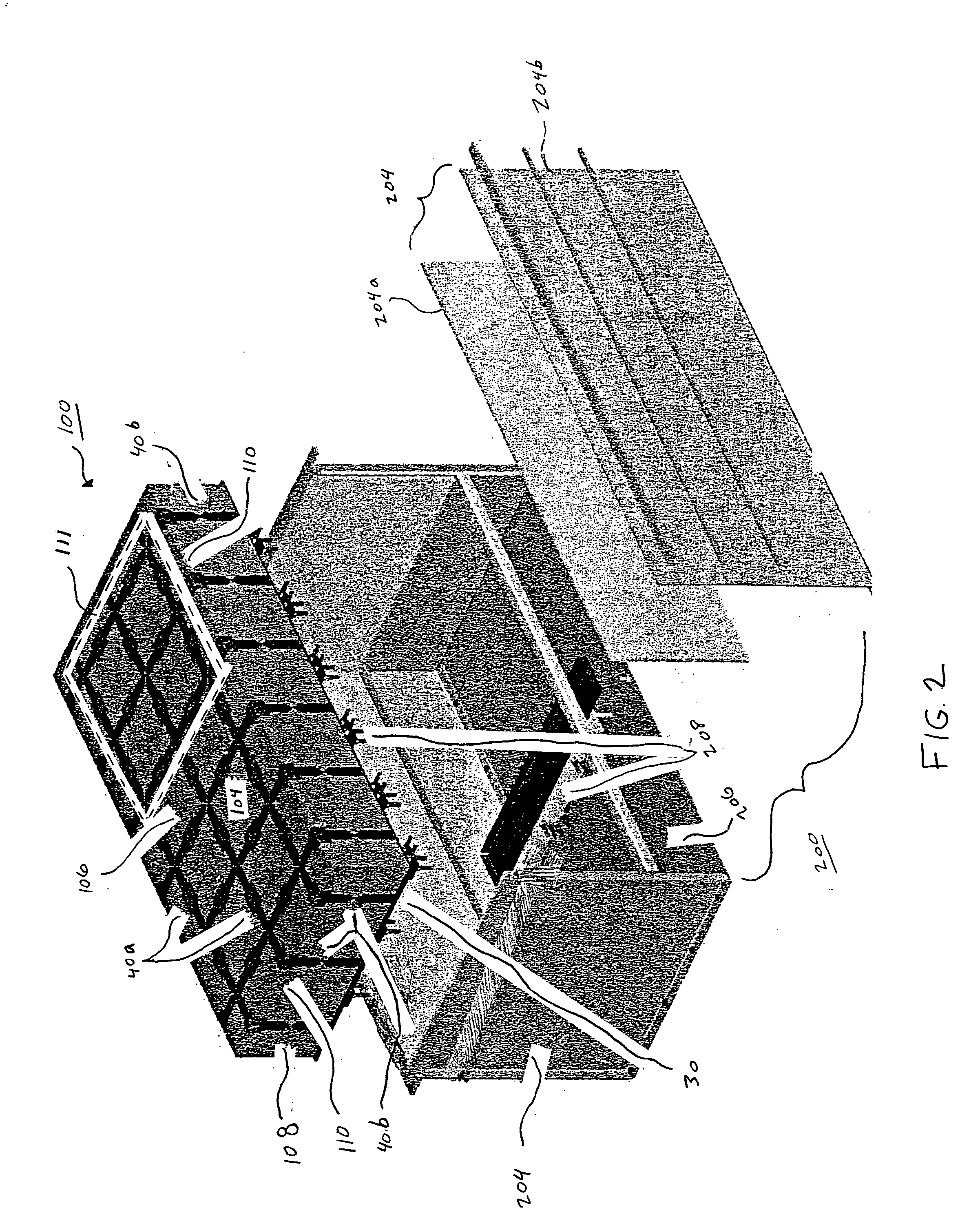Phased array antenna with edge elements and associated methods
a phased array and edge element technology, applied in the field of communication, can solve the problems of limiting the bandwidth and directivity capabilities of such antennas, affecting the performance of the array of dipole antenna elements, and affecting the performance of the array, so as to increase the capacitive coupling therebetween, and increase the capacitive coupling
- Summary
- Abstract
- Description
- Claims
- Application Information
AI Technical Summary
Benefits of technology
Problems solved by technology
Method used
Image
Examples
Embodiment Construction
[0035] The present invention will now be described more fully hereinafter with reference to the accompanying drawings, in which preferred embodiments of the invention are shown. This invention may, however, be embodied in many different forms and should not be construed as limited to the embodiments set forth herein. Rather, these embodiments are provided so that this disclosure will be thorough and complete, and will fully convey the scope of the invention to those skilled in the art. Like numbers refer to like elements throughout, and prime, double prime and triple prime notations are used to indicate similar elements in alternate embodiments.
[0036] Referring initially to FIGS. 1 and 2, a wideband phased array antenna 100 in accordance with the present invention will now be described. The phased array antenna 100 is particularly advantageous when design constraints limit the number of active dipole antenna elements in the array. The design constraints may be driven by a platform ...
PUM
 Login to View More
Login to View More Abstract
Description
Claims
Application Information
 Login to View More
Login to View More - R&D
- Intellectual Property
- Life Sciences
- Materials
- Tech Scout
- Unparalleled Data Quality
- Higher Quality Content
- 60% Fewer Hallucinations
Browse by: Latest US Patents, China's latest patents, Technical Efficacy Thesaurus, Application Domain, Technology Topic, Popular Technical Reports.
© 2025 PatSnap. All rights reserved.Legal|Privacy policy|Modern Slavery Act Transparency Statement|Sitemap|About US| Contact US: help@patsnap.com



